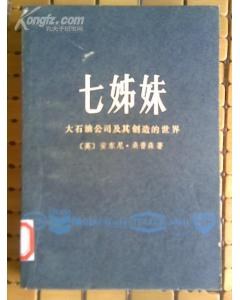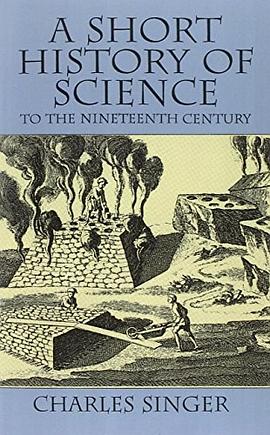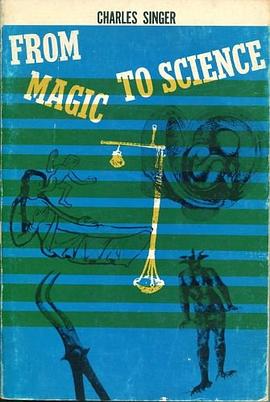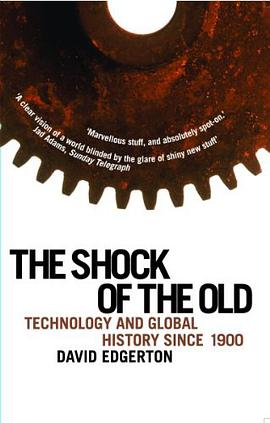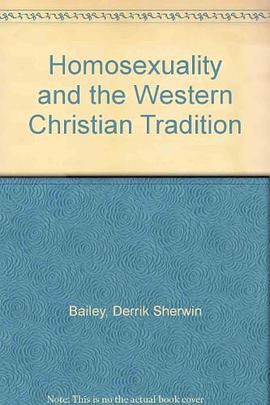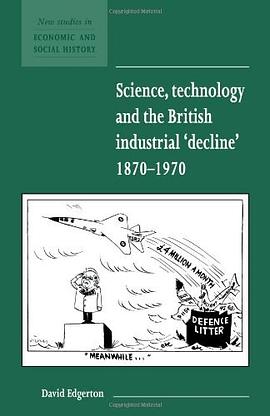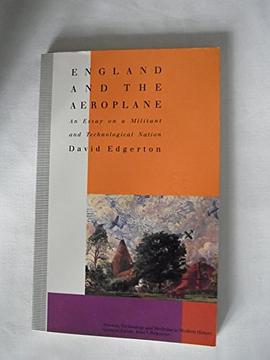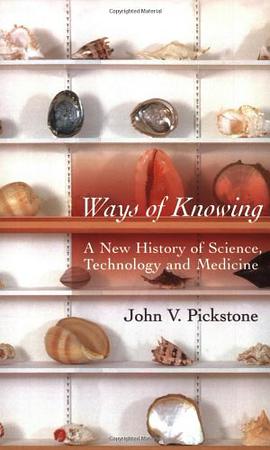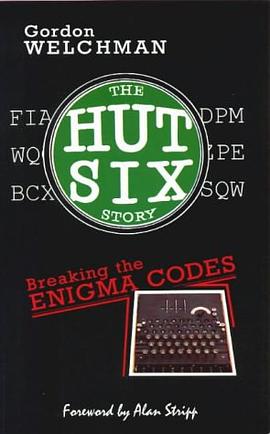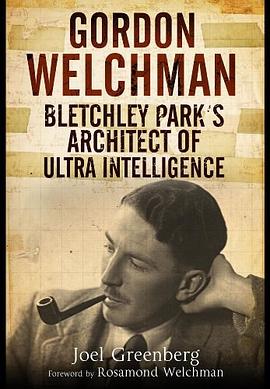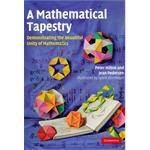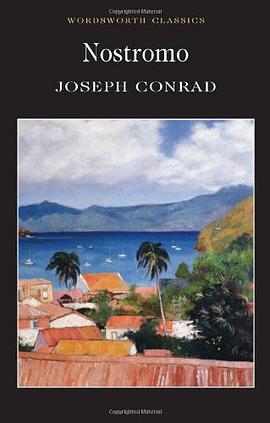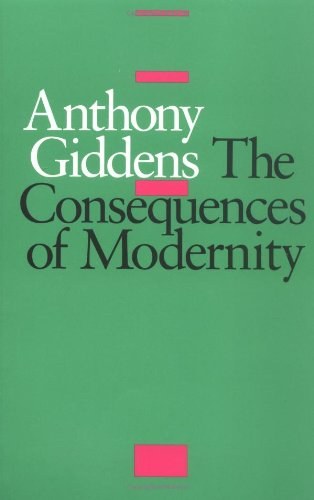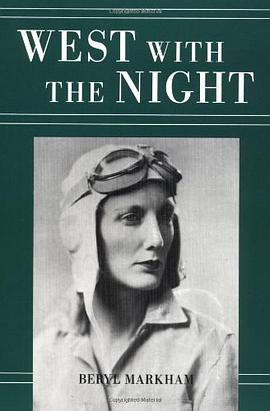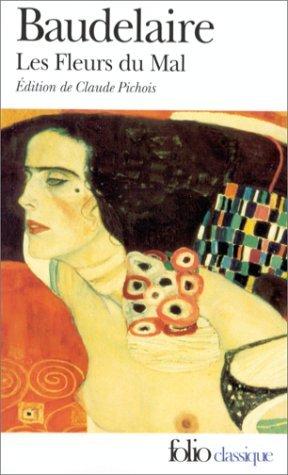歐洲
技术史(Ⅰ-Ⅶ) 豆瓣
作者:
查尔斯·辛格
上海科技教育出版社
2004
我作为常务主编,与查尔斯・辛格(Chales Singer)、DJ.霍姆亚德(E. J. Holmyard)和A-R-霍尔(A. R. Hall)一起与这部著作发生关系,至今已有35年了。这部著作是按照英国一家领先的化学公司―帝国化学工业有限公司(简称ICI)――赞助的一项雄心勃勃的计划,由牛津大学出版社出版的。其最初构思为5卷本,旨在最宽泛的意义上囊括从人类文明发端至19世纪末的整个技术史。继而,作为唯一的主编,我负责 1978年出版的涵盖1900-1950年的后续两卷本的工作。牛津大学出版社作为学术著作的出版者,把这两卷本看作它成立500周年庆典的一部分。最后,包括整部著作的综合索引的最后一卷第皿卷于1984年问世。可见,这部《技术史》占据了我的大部分工作生涯。就我而言,对我在过去岁月里观察到的一些变化进行反思也许并无不妥。
帝国化学工业有限公司对于这部厚重之作头5卷的支持,是具有卓识远见的赞助的一例。作为一家国际性的、以科学为基础的公司,它的活动是过去许多代人的成就促成的。它开始有些意外地意识到,一旦产生了需求,居然没有一本能供学者们在进行更专业的工作之前作为首选参考书的综合技术史。这部《技术史》恰如其分地用事实填补了这个空白,以至于除去一例之外,没有一部堪与其媲美的替代性著作出版过,这个例外就是李约瑟(Joseph Needham)的不朽之作《中国的科学与文明》(Science and Civilisation in China),它向西方和东方学者同样揭示了新的世界。虽然这部书的第一卷在1954年问世,却仍然未完成,不过已经胜利在望了。极其遗憾的是,原来的5卷《技术史》完成之前,很少有这类发人深思的著作可以援用。也许我们将会在21世纪看到东西方的贡献都整合在其中的一部全球视野的技术史。然而必须承认,这样一种可能性不单单是学术上的,欲使此类计划得以成功,管理人员的素养也是至关重要的。作为这部及其他著作的主编,我始终明白在多大的程度上应归于作者们,正是他们贡献了自己的专业知识来创作一个个章节。但是,像音乐家一样,他们的努力之所以能够创造出和谐的音乐,完全是建立在他们齐心协力的基础上的。
《技术史》这部著作分两批问世的原因曾招致人们的评论。当1950年着手筹划这部书时,在时间上,世纪的更替似乎剔罗辑上的终点。早年的经验主义为牛顿(Newton)的物理学、拉瓦锡(Lavosier)和道尔顿(Dalton)的新化学及工业革命所遵循。但是,19世纪后半叶不断有新的现象被发现(尤其在电学领域内),这种本质上机械的经典观点是不合时宜的。20世纪伊始,人们看到相对论的出现,随后不久是量子力学的创立。那时,人们发觉这不仅说明了难以与早期的研究相调和的态度变化,而且还要求向普通的读者引进难以掌握的艰深的理论概念。然而到1970年,局面有了一些改观。1945年原子弹戏剧性的突然出现,促使公众注意到原子物理中产生的理论和实用两方面的重大发展,并且新一代的读者已然成长起来,他们所受的教育至少对于这些新的发展给予了关注。因此,把《技术史》从1900年推进到1950年是与时俱进的。意味深长的是,在保持实质上同等研究水平的条件下,这半个世纪需要两整卷的篇幅,而至1900年的技术史则有5卷就够了。自1950年以来,技术演进的步伐进一步加快了,预期补充的两卷将把《技术史》延伸至今。可以想见,不仅对于当时存在的各个领域的重大进展,而且在微电子和计算机、遗传工程和生物技术、空间探索和研究、核动力、机器人等新领域,人们都必定会发现新的天地。
尽管这部《技术史》迄今未遇到竞争对手,它的一个主要目的是成功的,即作为更细致的研究的基础,它提供了一份易于了解的文献来源,从而在技术史方面激起了人们的兴趣。有趣的是,这些研究已经显示出地域上的区分。在英国和欧洲其他大部分地方,在技术上注重的是1922年建立的纽科门学会传统―所谓的具体细节进路。社会、政治和经济等因素的重要性得到充分的认识,但却是与技术创新直接相关的。然而在美国,近30年来,人们认为社会、政治和经济这些因素具有压倒一切的重要性;毫无疑问,其部分原因是许多美国的科技史学家有着大学文科的背景和少许的工艺知识。然而,说得更严重些,在美国,20世纪的技术被广泛地看作美国的技术的同义语,却把世界其余地方的贡献大大抹煞了。值得高兴的是近一二年内有证据表明,年轻一代的美国技术史学家正在质疑这种内省的、狭隘的态度,而提倡一种更开明的研究方法。
这部《技术史》长期以来一直是标准的参考书,无疑反映了这样的事实:英语已经变成世界上最广泛接受的语言。此外,它的流传因为日文版、意大利文版的出现而增加了。我与T"K-德里(T. K. Derry)在1960年出版的《技术史》头5卷节本《技术简史》(A Short History of Technology),已经用这些文字和西班牙文、荷兰文面世。很荣幸,中国的科技史学家们现在认为应当把这部《技术史》译成他们自己的文字。我十分清楚这需要巨大的工作量,因此我感谢所有为此勇于合作的人。我衷心地希望,这部书在他们这个有着几千年不断的技术创新史的国家中所激发起的研究,将是无可匹敌的。
帝国化学工业有限公司对于这部厚重之作头5卷的支持,是具有卓识远见的赞助的一例。作为一家国际性的、以科学为基础的公司,它的活动是过去许多代人的成就促成的。它开始有些意外地意识到,一旦产生了需求,居然没有一本能供学者们在进行更专业的工作之前作为首选参考书的综合技术史。这部《技术史》恰如其分地用事实填补了这个空白,以至于除去一例之外,没有一部堪与其媲美的替代性著作出版过,这个例外就是李约瑟(Joseph Needham)的不朽之作《中国的科学与文明》(Science and Civilisation in China),它向西方和东方学者同样揭示了新的世界。虽然这部书的第一卷在1954年问世,却仍然未完成,不过已经胜利在望了。极其遗憾的是,原来的5卷《技术史》完成之前,很少有这类发人深思的著作可以援用。也许我们将会在21世纪看到东西方的贡献都整合在其中的一部全球视野的技术史。然而必须承认,这样一种可能性不单单是学术上的,欲使此类计划得以成功,管理人员的素养也是至关重要的。作为这部及其他著作的主编,我始终明白在多大的程度上应归于作者们,正是他们贡献了自己的专业知识来创作一个个章节。但是,像音乐家一样,他们的努力之所以能够创造出和谐的音乐,完全是建立在他们齐心协力的基础上的。
《技术史》这部著作分两批问世的原因曾招致人们的评论。当1950年着手筹划这部书时,在时间上,世纪的更替似乎剔罗辑上的终点。早年的经验主义为牛顿(Newton)的物理学、拉瓦锡(Lavosier)和道尔顿(Dalton)的新化学及工业革命所遵循。但是,19世纪后半叶不断有新的现象被发现(尤其在电学领域内),这种本质上机械的经典观点是不合时宜的。20世纪伊始,人们看到相对论的出现,随后不久是量子力学的创立。那时,人们发觉这不仅说明了难以与早期的研究相调和的态度变化,而且还要求向普通的读者引进难以掌握的艰深的理论概念。然而到1970年,局面有了一些改观。1945年原子弹戏剧性的突然出现,促使公众注意到原子物理中产生的理论和实用两方面的重大发展,并且新一代的读者已然成长起来,他们所受的教育至少对于这些新的发展给予了关注。因此,把《技术史》从1900年推进到1950年是与时俱进的。意味深长的是,在保持实质上同等研究水平的条件下,这半个世纪需要两整卷的篇幅,而至1900年的技术史则有5卷就够了。自1950年以来,技术演进的步伐进一步加快了,预期补充的两卷将把《技术史》延伸至今。可以想见,不仅对于当时存在的各个领域的重大进展,而且在微电子和计算机、遗传工程和生物技术、空间探索和研究、核动力、机器人等新领域,人们都必定会发现新的天地。
尽管这部《技术史》迄今未遇到竞争对手,它的一个主要目的是成功的,即作为更细致的研究的基础,它提供了一份易于了解的文献来源,从而在技术史方面激起了人们的兴趣。有趣的是,这些研究已经显示出地域上的区分。在英国和欧洲其他大部分地方,在技术上注重的是1922年建立的纽科门学会传统―所谓的具体细节进路。社会、政治和经济等因素的重要性得到充分的认识,但却是与技术创新直接相关的。然而在美国,近30年来,人们认为社会、政治和经济这些因素具有压倒一切的重要性;毫无疑问,其部分原因是许多美国的科技史学家有着大学文科的背景和少许的工艺知识。然而,说得更严重些,在美国,20世纪的技术被广泛地看作美国的技术的同义语,却把世界其余地方的贡献大大抹煞了。值得高兴的是近一二年内有证据表明,年轻一代的美国技术史学家正在质疑这种内省的、狭隘的态度,而提倡一种更开明的研究方法。
这部《技术史》长期以来一直是标准的参考书,无疑反映了这样的事实:英语已经变成世界上最广泛接受的语言。此外,它的流传因为日文版、意大利文版的出现而增加了。我与T"K-德里(T. K. Derry)在1960年出版的《技术史》头5卷节本《技术简史》(A Short History of Technology),已经用这些文字和西班牙文、荷兰文面世。很荣幸,中国的科技史学家们现在认为应当把这部《技术史》译成他们自己的文字。我十分清楚这需要巨大的工作量,因此我感谢所有为此勇于合作的人。我衷心地希望,这部书在他们这个有着几千年不断的技术创新史的国家中所激发起的研究,将是无可匹敌的。
A Short History of Science to the 19th Century 豆瓣
作者:
Charles Singer
Dover Publications Inc.
1998
- 3
A comprehensive yet concise chronicle of scientific inquiries ranges from the early Greeks (c. 600 BC) to the reaction to the 19th-century publication of "The Origin of Species." Maps, charts and diagrams illustrate the development of the idea of a rational and interconnected material world in this fascinating and highly readable history.
From Magic to Science 豆瓣
作者:
Charles Singer
Dover Publications Inc.
1958
A History of Technology 豆瓣
作者:
Charles Singer
Oxford University Press
1954
Shock Of The Old 豆瓣
作者:
David Edgerton
Profile Books
2008
- 1
The first proper global account of the place of technology in twentieth century history, this brilliant, thought-provoking book will radically revise our understanding of the relationship between technology and society. Whereas standard histories of technology give tired old accounts of the usual inventions - planes, bombs - "The Shock of the Old" is based on a different idea. Its thrust is that for the full picture of the history of technology we need to know not about what a few people invented, but about what everyday people used - and when they actually used things, if it was a long time after invention. It, therefore, reassesses the significance of, for example, the Pill and IT, and shows the continued importance of technology, such as corrugated iron and sewing machines. In taking this approach, "The Shock of the Old" challenges the idea that we live in an era of ever increasing change and so dismisses naivetes about 'the information age'. Interweaving political, economic and cultural history, it will show what it means to think critically about technology and its importance.
Homosexuality and the Western Christian Tradition 豆瓣
作者:
Derrik Sherwin Bailey
Shoe String Press Inc.,U.S.
1975
- 1
Science, Tech & Brit Indus Decline 豆瓣
作者:
David Edgerton
Cambridge University Press
2008
- 8
The place of science and technology in the British economy and society is widely seen as critical to our understanding of the British 'decline'. There is a long tradition of characterising post-1870 Britain by its lack of enthusiasm for science and by the low social status of the practitioners of technology. David Edgerton examines these assumptions, analysing the arguments for them and pointing out the different intellectual traditions from which they arise. Drawing on a wealth of statistical data, he argues that British innovation and technical training were much stronger than is generally believed, and that from 1870 to 1970 Britain's innovative record was comparable to that of Germany. This book is a comprehensive study of the history of British science and technology in relation to economic performance. It will be of interest to scientists and engineers as well as economic historians, and will be invaluable to students approaching the subject for the first time.
England and the Aeroplane 豆瓣
作者:
David Edgerton
Palgrave Macmillan
1991
- 8
Ways of Knowing 豆瓣
作者:
John V. Pickstone
The University of Chicago Press
2001
- 4
In Ways of Knowing, John V. Pickstone provides a new and accessible framework for understanding science, technology, and medicine (STM) in the West from the Renaissance to the present. Pickstone's approach has four key features. First, he synthesizes the long-term histories and philosophies of disciplines that are normally studied separately. Second, he dissects STM into specific ways of knowing—natural history, analysis, and experimentalism—with separate but interlinked elements. Third, he explores these ways of knowing as forms of work related to our various technologies for making, mending, and destroying. And finally, he relates scientific and technical knowledges to popular understandings and to politics.
Covering an incredibly wide range of subjects, from minerals and machines to patients and pharmaceuticals, and from experimental physics to genetic engineering, Pickstone's Ways of Knowing challenges the reader to reexamine traditional conceptualizations of the history, philosophy, and social studies of science, technology, and medicine.
Table of Contents
Acknowledgments
A note to the reader
1. Ways of knowing: an introduction
An outline of the method
Missions for this book
An outline of the story
2. World-readings: the meanings of nature and of science
Variety in modern Western medicine
Meanings and readings
Renaissance cosmologies
Disenchantment?
Natural theology and natural diseases
Revolution, respectability and evolution
Science, progress and the State
Modernist human-natures
Nature and culture
3. Natural history
'Historia' and representation
New worlds, new properties and new creators
Natures for pedigree people
Natural empires
Popular natural history
Displays of technology, new and old
'Natural history' now
4. Analysis and the rationalisation of production
Rationalisation and identities
Production and analytical sciences
5. The elements of bodies, earth and society
Medical analysis: corpse and patient
Analysing plants and animals
Sciences of the earth
Analysing the social
Reflections on the institutions of analysis
6. Experimentalism and invention
Meanings of experiment
Experimental histories
Experimentation and the age of analysis
Synthesis in chemistry
Experimentation in biomedical sciences
Experimentation in physical sciences
On clouds, dust and control
Experimentalism and hierarchies of knowledge
Experiment and invention
7. Industries, universities and the technoscientific complexes
Analysis and established technologies
Electrical analysis and synthesis
Electrotechnics and industrial laboratories
Dyestuffs and pharmaceuticals
Remedies for/from microbes
Science and industry in and after the First World War
Technosciences in and after the Second World War
Coda
8. Technoscience and public understandings: the British case c.2000
'No one understands us'
Science back in business
The study of 'public understanding of science'
The politics of technoscience
Understanding public science
Analysis and the bounds of 'science'
Publics and natural histories
Public understandings and world-readings
Science, values and history
Bibliography
Index
和《佛陀的美麗新世界》一起,装在梁文道先生的口袋里,作为日常读物。
Covering an incredibly wide range of subjects, from minerals and machines to patients and pharmaceuticals, and from experimental physics to genetic engineering, Pickstone's Ways of Knowing challenges the reader to reexamine traditional conceptualizations of the history, philosophy, and social studies of science, technology, and medicine.
Table of Contents
Acknowledgments
A note to the reader
1. Ways of knowing: an introduction
An outline of the method
Missions for this book
An outline of the story
2. World-readings: the meanings of nature and of science
Variety in modern Western medicine
Meanings and readings
Renaissance cosmologies
Disenchantment?
Natural theology and natural diseases
Revolution, respectability and evolution
Science, progress and the State
Modernist human-natures
Nature and culture
3. Natural history
'Historia' and representation
New worlds, new properties and new creators
Natures for pedigree people
Natural empires
Popular natural history
Displays of technology, new and old
'Natural history' now
4. Analysis and the rationalisation of production
Rationalisation and identities
Production and analytical sciences
5. The elements of bodies, earth and society
Medical analysis: corpse and patient
Analysing plants and animals
Sciences of the earth
Analysing the social
Reflections on the institutions of analysis
6. Experimentalism and invention
Meanings of experiment
Experimental histories
Experimentation and the age of analysis
Synthesis in chemistry
Experimentation in biomedical sciences
Experimentation in physical sciences
On clouds, dust and control
Experimentalism and hierarchies of knowledge
Experiment and invention
7. Industries, universities and the technoscientific complexes
Analysis and established technologies
Electrical analysis and synthesis
Electrotechnics and industrial laboratories
Dyestuffs and pharmaceuticals
Remedies for/from microbes
Science and industry in and after the First World War
Technosciences in and after the Second World War
Coda
8. Technoscience and public understandings: the British case c.2000
'No one understands us'
Science back in business
The study of 'public understanding of science'
The politics of technoscience
Understanding public science
Analysis and the bounds of 'science'
Publics and natural histories
Public understandings and world-readings
Science, values and history
Bibliography
Index
和《佛陀的美麗新世界》一起,装在梁文道先生的口袋里,作为日常读物。
The Hut Six Story 豆瓣
作者:
Gordon Welchman
Classic Crypto Books
1997
- 10
Gordon Welchman 豆瓣
作者:
Joel Greenberg
Frontline Books
2014
- 5
“Enigma’s ‘forgotten genius’ . . . [the] story of Alan Turing’s spymaster boss who led the team that cracked Hitler’s WWII codes.” —Daily Mail
The Official Secrets Act and the passing of time have prevented the Bletchley Park story from being told by many of its key participants. Here at last is a book that allows some of them to speak for the first time. Gordon Welchman was one of the Park’s most important figures. Like Alan Turing, his pioneering work was fundamental to the success of Bletchley Park and helped pave the way for the birth of the digital age. Yet, his story is largely unknown to many. His book, The Hut Six Story, was the first to reveal not only how they broke the codes, but how it was done on an industrial scale. Its publication created such a stir in GCHQ and the NSA that Welchman was forbidden to discuss the book or his wartime work with the media.
In order to finally set the record straight, Bletchley Park historian and tour guide Joel Greenberg has drawn on Welchman’s personal papers and correspondence with wartime colleagues that lay undisturbed in his son’s loft for many years. Packed with fascinating new insights, including Welchman’s thoughts on key Bletchley figures and the development of the bombe machine, this is essential reading for anyone interested in the clandestine activities at Bletchley Park.
“A magnificent biography which finally provides recognition to one of Bletchley’s and Britain’s lost heroes.” —Michael Smith
“Reveals a man equally as fascinating equally as important as Turing, and tells us even more about what went on in this most secret of establishments during the war years.” —Books Monthly
The Official Secrets Act and the passing of time have prevented the Bletchley Park story from being told by many of its key participants. Here at last is a book that allows some of them to speak for the first time. Gordon Welchman was one of the Park’s most important figures. Like Alan Turing, his pioneering work was fundamental to the success of Bletchley Park and helped pave the way for the birth of the digital age. Yet, his story is largely unknown to many. His book, The Hut Six Story, was the first to reveal not only how they broke the codes, but how it was done on an industrial scale. Its publication created such a stir in GCHQ and the NSA that Welchman was forbidden to discuss the book or his wartime work with the media.
In order to finally set the record straight, Bletchley Park historian and tour guide Joel Greenberg has drawn on Welchman’s personal papers and correspondence with wartime colleagues that lay undisturbed in his son’s loft for many years. Packed with fascinating new insights, including Welchman’s thoughts on key Bletchley figures and the development of the bombe machine, this is essential reading for anyone interested in the clandestine activities at Bletchley Park.
“A magnificent biography which finally provides recognition to one of Bletchley’s and Britain’s lost heroes.” —Michael Smith
“Reveals a man equally as fascinating equally as important as Turing, and tells us even more about what went on in this most secret of establishments during the war years.” —Books Monthly
A Mathematical Tapestry 豆瓣
作者:
Hilton, Peter; Pedersen, Jean; Donmoyer, Sylvie
2010
- 7
This easy-to-read 2010 book demonstrates how a simple geometric idea reveals fascinating connections and results in number theory, the mathematics of polyhedra, combinatorial geometry, and group theory. Using a systematic paper-folding procedure it is possible to construct a regular polygon with any number of sides. This remarkable algorithm has led to interesting proofs of certain results in number theory, has been used to answer combinatorial questions involving partitions of space, and has enabled the authors to obtain the formula for the volume of a regular tetrahedron in around three steps, using nothing more complicated than basic arithmetic and the most elementary plane geometry. All of these ideas, and more, reveal the beauty of mathematics and the interconnectedness of its various branches. Detailed instructions, including clear illustrations, enable the reader to gain hands-on experience constructing these models and to discover for themselves the patterns and relationships they unearth.
Nostromo 豆瓣
作者:
Joseph Conrad
Wordsworth Editions Ltd
1996
Book Description
The Wordsworth Classics covers a huge list of beloved works of literature in English and translations. This growing series is rigorously updated, with scholarly introductions and notes added to new titles.
Set in the imaginary South American republic of Costaguana, this work is an illustration of the impact of foreign exploitation on a developing nation. As Sulaco, site of an English/American controlled silver mine establishes its independence, its ideals are inevitably compromised.
From Library Journal
This involved, philosophical novel is not for the casual listener, especially one who is supposed to be concentrating on the road ahead. Writing in 1904, Conrad invented a complex South American country with a turbulent history and a potentially explosive population, ranging from the wealthy gringo running the Sulaco silver mine to the poorest worker loading cargo on the docks. Although the story teems with lively characters, the dazzling figure of Nostromo eclipses them all. A natural leader?brave, handsome, and incorruptible?he naturally becomes the epicenter of the revolution that soon devastates Sulaco. With characteristic eloquence, Conrad has focused on the dramatic action of the revolution to explore challenging themes: capitalism, imperialism, revolution, and social justice. Unfortunately, this audio program, read by Frederick Davidson, is disappointing. Despite fine dramatic characterizations, the narrator's posh British accent is so pronounced that it often detracts from the text. Since Nostromo has also been narrated by Frank Muller (Recorded Books) and Wolfram Kandinsky (Books on TapeR), perhaps this version may not be the best choice.
Jo Carr, Sarasota, Fla.
From AudioFile
This abridgment of Joseph Conrad's classic keeps in mind that the story is as much about the fictional province of Sulaco and the San Tome silver mine as it is about Nostromo, the "incorruptible" sailor who ends up concealing a fortune in silver. Although Nostromo is a presence throughout the novel, his tale actually begins on Side six. It preserves much of Conrad's fine detail, background history of Sulaco, and prose style, making the listener almost forget that this is an abridgment. Joss Ackland speaks Conrad's descriptive passages with a clear, refined voice that brings an authoritative air to this fictional history, while giving its main characters rougher voices. J.A.S.
About Author
Joseph Conrad was born Józef Teodor Konrad Korzeniowski in Russian-occupied Poland on December 3, 1857. His parents were aristocrats and intensely nationalistic political activists who were exiled to Vologda, northeast of Moscow, for their opposition to tsarist rule. Józef's mother, Ewa, died in 1865 of tuberculosis, and his father, Apollo, succumbed to the same disease four years later. Józef was cared for by his uncle Tadeusz Bobrowski until the young man acted on a long-expressed desire to go to sea. In 1874 he left for Marseilles, where he began sailing for the French merchant service.
In 1878, in money difficulties and no longer able to sail on French vessels because he had not secured an exemption from military service in Russia, Conrad attempted suicide. After his recovery, he left Marseilles on a British ship and went to England, where he worked the route between Lowestoft and Newcastle. He arrived in England virtually without qualifications and with very little English, but he was able in a few years to earn his master's certificate in the British merchant marine and became a British national. Conrad traveled to Mauritius and Constantinople, worked on wool clippers from London to Australia, and sailed the waters of the Far East. These voyages were punctuated by long periods when he could not find suitable positions because of the decline in sail-powered transport in the age of the steamship.
Conrad began writing in English, which became his language of choice after his native Polish and French, although he complained of difficulties with English grammar and syntax. His voyages provided the background for much of his fiction. 'Youth' and 'Typhoon' draw on Conrad's personal experience with disasters at sea. In 1881, he became second mate on the Palestine, a ship that was rammed, caught in tempestuous gales in the English Channel, had its cargo of coal catch fire, and sank off Sumatra. His captaincy of the Otago from Bangkok in 1888 informs The Shadow-Line (1917) and the stories 'Falk' and 'The Secret Sharer.' Heart of Darkness (1899) is drawn from an expedition to the Belgian Congo in 1890. He was already working on a novel when he traveled to the Congo, where he expected to take command of a river steamer. The assignment failed to materialize, and Conrad fell dangerously ill. On his return to England, he was forced to find work as a ship's mate. He was able during this period of intermittent employment to devote more time to his writing, and in 1894 he submitted the novel Almayer's Folly to the publisher Fisher Unwin. Unwin published it in 1895 under the anglicized version of Conrad's Polish name.
Conrad was encouraged to continue to write by Unwin's reader Edward Garnett, although he went on applying for posts as a ship's captain. He finished The Outcast of the Islands in 1895 and in 1896 married Jessie George. They had two sons, Borys and John, born in 1898 and 1906. Constantly in need of more money, Conrad produced short stories and serialized his novels. Although plagued by physical illness and psychological problems, he established one of the most formidable bodies of work in the English language. His longer works include The Nigger of the 'Narcissus (1897), Lord Jim (1900), Nostromo (1904), The Secret Agent (1907), Under Western Eyes (1911), and Victory (1915). Nostromo, set in the imaginary South American republic of Costaguana, is considered by many critics to be Conrad's best work and by some to be the finest novel of the twentieth century.
From early in his career Conrad had the admiration of fellow writers--Stephen Crane, John Galsworthy, Henry James, and Ford Madox Ford, with whom Conrad collaborated on The Inheritors (1901) and Romance (1903). It was only after the success of Chance (1913), however, that his writing afforded him widespread recognition and relative financial security. He spent his declining years in Kent, often in ill health, and died on August 3, 1924, at his home near Canterbury.
Book Dimension :
length: (cm)19.8 width:(cm)12.6
The Wordsworth Classics covers a huge list of beloved works of literature in English and translations. This growing series is rigorously updated, with scholarly introductions and notes added to new titles.
Set in the imaginary South American republic of Costaguana, this work is an illustration of the impact of foreign exploitation on a developing nation. As Sulaco, site of an English/American controlled silver mine establishes its independence, its ideals are inevitably compromised.
From Library Journal
This involved, philosophical novel is not for the casual listener, especially one who is supposed to be concentrating on the road ahead. Writing in 1904, Conrad invented a complex South American country with a turbulent history and a potentially explosive population, ranging from the wealthy gringo running the Sulaco silver mine to the poorest worker loading cargo on the docks. Although the story teems with lively characters, the dazzling figure of Nostromo eclipses them all. A natural leader?brave, handsome, and incorruptible?he naturally becomes the epicenter of the revolution that soon devastates Sulaco. With characteristic eloquence, Conrad has focused on the dramatic action of the revolution to explore challenging themes: capitalism, imperialism, revolution, and social justice. Unfortunately, this audio program, read by Frederick Davidson, is disappointing. Despite fine dramatic characterizations, the narrator's posh British accent is so pronounced that it often detracts from the text. Since Nostromo has also been narrated by Frank Muller (Recorded Books) and Wolfram Kandinsky (Books on TapeR), perhaps this version may not be the best choice.
Jo Carr, Sarasota, Fla.
From AudioFile
This abridgment of Joseph Conrad's classic keeps in mind that the story is as much about the fictional province of Sulaco and the San Tome silver mine as it is about Nostromo, the "incorruptible" sailor who ends up concealing a fortune in silver. Although Nostromo is a presence throughout the novel, his tale actually begins on Side six. It preserves much of Conrad's fine detail, background history of Sulaco, and prose style, making the listener almost forget that this is an abridgment. Joss Ackland speaks Conrad's descriptive passages with a clear, refined voice that brings an authoritative air to this fictional history, while giving its main characters rougher voices. J.A.S.
About Author
Joseph Conrad was born Józef Teodor Konrad Korzeniowski in Russian-occupied Poland on December 3, 1857. His parents were aristocrats and intensely nationalistic political activists who were exiled to Vologda, northeast of Moscow, for their opposition to tsarist rule. Józef's mother, Ewa, died in 1865 of tuberculosis, and his father, Apollo, succumbed to the same disease four years later. Józef was cared for by his uncle Tadeusz Bobrowski until the young man acted on a long-expressed desire to go to sea. In 1874 he left for Marseilles, where he began sailing for the French merchant service.
In 1878, in money difficulties and no longer able to sail on French vessels because he had not secured an exemption from military service in Russia, Conrad attempted suicide. After his recovery, he left Marseilles on a British ship and went to England, where he worked the route between Lowestoft and Newcastle. He arrived in England virtually without qualifications and with very little English, but he was able in a few years to earn his master's certificate in the British merchant marine and became a British national. Conrad traveled to Mauritius and Constantinople, worked on wool clippers from London to Australia, and sailed the waters of the Far East. These voyages were punctuated by long periods when he could not find suitable positions because of the decline in sail-powered transport in the age of the steamship.
Conrad began writing in English, which became his language of choice after his native Polish and French, although he complained of difficulties with English grammar and syntax. His voyages provided the background for much of his fiction. 'Youth' and 'Typhoon' draw on Conrad's personal experience with disasters at sea. In 1881, he became second mate on the Palestine, a ship that was rammed, caught in tempestuous gales in the English Channel, had its cargo of coal catch fire, and sank off Sumatra. His captaincy of the Otago from Bangkok in 1888 informs The Shadow-Line (1917) and the stories 'Falk' and 'The Secret Sharer.' Heart of Darkness (1899) is drawn from an expedition to the Belgian Congo in 1890. He was already working on a novel when he traveled to the Congo, where he expected to take command of a river steamer. The assignment failed to materialize, and Conrad fell dangerously ill. On his return to England, he was forced to find work as a ship's mate. He was able during this period of intermittent employment to devote more time to his writing, and in 1894 he submitted the novel Almayer's Folly to the publisher Fisher Unwin. Unwin published it in 1895 under the anglicized version of Conrad's Polish name.
Conrad was encouraged to continue to write by Unwin's reader Edward Garnett, although he went on applying for posts as a ship's captain. He finished The Outcast of the Islands in 1895 and in 1896 married Jessie George. They had two sons, Borys and John, born in 1898 and 1906. Constantly in need of more money, Conrad produced short stories and serialized his novels. Although plagued by physical illness and psychological problems, he established one of the most formidable bodies of work in the English language. His longer works include The Nigger of the 'Narcissus (1897), Lord Jim (1900), Nostromo (1904), The Secret Agent (1907), Under Western Eyes (1911), and Victory (1915). Nostromo, set in the imaginary South American republic of Costaguana, is considered by many critics to be Conrad's best work and by some to be the finest novel of the twentieth century.
From early in his career Conrad had the admiration of fellow writers--Stephen Crane, John Galsworthy, Henry James, and Ford Madox Ford, with whom Conrad collaborated on The Inheritors (1901) and Romance (1903). It was only after the success of Chance (1913), however, that his writing afforded him widespread recognition and relative financial security. He spent his declining years in Kent, often in ill health, and died on August 3, 1924, at his home near Canterbury.
Book Dimension :
length: (cm)19.8 width:(cm)12.6
The Consequences of Modernity 豆瓣 Goodreads
The Consequences of Modernity
作者:
Anthony Giddens
Stanford University Press
1991
- 3
In this major theoretical statement, the author offers a new and provoctive interpretation of institutional transformations associated with modernity. What is modernity? The author suggests, "As a first approximation, let us simply say the following: 'modernity' refers to modes of social life or organization which emerged in Europe from about the seventeenth century onwards and which subsequently became more or less worldwide in their influence." We do not as yet, the author argues, live in a post-modern world. The distinctive characteristics of our major social institutions in the closing years of the twentieth century suggest that, rather than entering into a period of post-modernity, we are moving into a period of "high modernity" in which the consequences of modernity are becoming more radicalized and universalized than before. A post-modern social universe may eventualy come into being, but this as yet lies on the other side of the forms of social and cultural organization that currently dominate world history. In developing a fresh characterization of the nature of modernity, the author concentrates on the themes of "security versus danger and o "trust versus risk. Modernity is a double-edged phenomenon. The development of modern social institutions has created vastly greater opportunities for human beings to enjoy a secure and rewarding existencethan in any type of pre-modern system. But modernity also has a somber side that has become very important in the present century, such as the frequently degrading nature of modern industrial work, the growth of totalitarianism, the threat of environmentsal destruction, and the alrming development of military power and weaponry. The book builds upon the author's pevious theoretical writings and will be of great interest to those who have followed his work through the years. However, this book covers issues the author has not previously analyzed and extends the scope of his work into areas of pressing practical concern.
West with the Night 豆瓣 Goodreads Goodreads
West with the Night
9.4 (9 个评分)
作者:
Beryl Markham
North Point Press
1983
- 5
A direct, stylish, and engrossing story of a marvelous life well lived. Markham describes her childhood in Kenya and her experiences as a bush pilot in the 1930s -- evoking the landscapes, people, and wildlife in rich detail.
Leonhard Euler and the Bernoullis 豆瓣
作者:
M. B. W. Tent
A K Peters
2009
- 8
Max Weber 豆瓣
作者:
Fritz Ringer
University Of Chicago Press
2004
- 11
Max Weber was one of the most influential and creative intellectual forces of the twentieth century. In his methodology of the social sciences, he both exposed the flaws and solidified the foundations of the German historical tradition. Throughout his life, he saw bureaucracy as a serious obstacle to cultural vitality but as an inescapable part of organizational rationality. And in his most famous essay, on the Protestant ethic, he uncovered the psychological underpinnings of capitalism and modern occupational life.
This searching work offers the first comprehensive introduction to Weber's thought for students and newcomers. Fritz Ringer locates Weber in his historical context, relating his ideas to the controversies and politics of his day. Ringer also considers the importance of Weber to contemporary life, discussing his insights into the limits of scholarly research and the future of Western capitalist societies. Weber, Ringer reminds us, believed in democracy, liberalism, and fundamental human rights; his ethic of responsibility remains as vital to our historical moment as it was to his own.
A concise and incisive look at the man and personality behind the thought, "Max Weber" is a masterful outing in intellectual biography and social theory.
This searching work offers the first comprehensive introduction to Weber's thought for students and newcomers. Fritz Ringer locates Weber in his historical context, relating his ideas to the controversies and politics of his day. Ringer also considers the importance of Weber to contemporary life, discussing his insights into the limits of scholarly research and the future of Western capitalist societies. Weber, Ringer reminds us, believed in democracy, liberalism, and fundamental human rights; his ethic of responsibility remains as vital to our historical moment as it was to his own.
A concise and incisive look at the man and personality behind the thought, "Max Weber" is a masterful outing in intellectual biography and social theory.
The Decline of the German Mandarins 豆瓣
作者:
Fritz K. Ringer
Wesleyan
1990
德国最后的文化贵族已经在二战前被终结了。关于这一代欧洲文人,韦伯做过类比,说他们近似中国儒家学者(Mandarins),其“地位来自教育与学识,而非世袭权力或财富”。关键是:中国学人饱读诗书、珍爱文化,同时具备政治抱负、治国才干。如此进退自如,可谓知识分子理想型。这一代文人都很讲文化民族主义,到了现在,被布尔迪厄通通批为“文化保守主义”一代,并认为他们要对纳粹兴起负主要责任。真是驴唇不对马嘴啊。
Les Fleurs du Mal 豆瓣
作者:
Charles Baudelaire
Gallimard
1999
- 5
